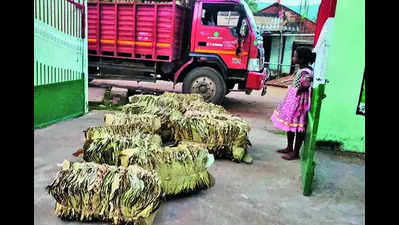Tribal Women: Tribal Women in Kandhamal Empowered with Sal Leaf Plate Making Machines | Bhubaneswar News


Berhampur: Tribal women in Kandhamal district, who earn their daily bread by selling sal leaf plates, made manually, will soon make such eco-friendly plates with the help of machines.
Integrated Tribal Development Agency (ITDA) in Phulbani has provided at least two sal leaf plate machines to a van dhan vikash kendra (VDVK) at Padiripada in Phiringia block.
The machines, costing around Rs 1 60 lakh each, was given under the Van Dhan Vikas Yojana (VDVY), a scheme of the ministry of tribal affairs and implemented by ITDA for empowering tribal women. Each of the machines will produce around 2,000 plates of varying sizes per day. The machine will put hard paper on the plates, which is higher in price, and that way the tribal women will end up earning more, said an ITDA officer.
Earlier, a tribal woman made a maximum of 500 plates manually and sold them between Rs 150 and Rs 200 per bundle. “When these plates are made with the help of machines, their price will go up around three folds,” the ITDA officer added.
“We have trained around 50 tribal women in the first phase. More women will be trained in the next phases,” Devjani Bhuyan, project administrator of ITDA Phulbani, said.
“Around 300 tribal women, all of whom are VDVK members, will benefit from the machines,” she added. “Demand for sal leaf plates and bowls have gone up after plastic use was restricted in the state. Such items are considered as eco-friendly substitutes to plastic. The machines will help to produce higher number of plates that can meet the demand in local market,” ITDA project manager P Murali Mohan said.
He added, “This time with our support, the women have sold around 320 bundles of plates to an outside agency at Rs 265 per bundle.”
We also published the following articles recently
Discover how tiger reserves in Karnataka are empowering tribal communities to produce 20-25 tonnes of honey annually under the brand Adavi. The initiative not only conserves the big cat population but also provides a sustainable livelihood for over 3,000 tribals in the region.















